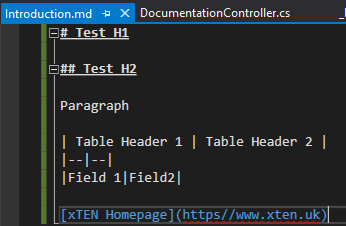
Show the world a better way in the comments: Writing in Markdown will help you focus on your words and not the crazy, unintended things that happen to your words when you use a WYSIWYG editor.ĭo you already write in Markdown? Or have another process to share? Like people who buy a Moleskine because it’ll help you write like Hemingway - no joke, it will. The email is smaller in size and will display faster on the recipients screen. The amount of code used is MUCH less than our messy example above. Take a look at the code, and at how it looks in the WYSIWYG editor. Draft and Sublime Text as well as almost all other Markdown editors have a way to export to HTML. Gmail doesn’t do this, but Customer.io, Mailchimp and many others do.įor example, if you’re using iA Writer, you can Edit -> Copy as HTML, and paste the pristine HTML right in to your email editor. If you’re writing in Markdown, you’re probably going to want to switch to the HTML mode of your email editor and get ready to copy and paste.

In Markdown and in HTML, it’s easy as the writer to see what you just did. The equivalent in Markdown is **EXAMPLE** which generated EXAMPLE in html. Wysiwyg editors create ugly, unpredictable HTMLĪs a quick comparison, let’s look at what happens when you copy and paste from a Google Doc. Whether you’re writing for an email or for the web, you can create HTML from Markdown that works the same way every time. Markdown converts to HTML in a predictable way. Like two stars to **bold** the text it surrounds. Every article or email that I write starts in Markdown.įor the uninitiated, writing in Markdown is like writing in plain text with some special formatting syntax. It helps separate content from presentation. Like many nerds, rather than typing in Microsoft Word or a Google Doc, I’ve found that writing in Markdown helps me formulate my thoughts better. I could go on for hours, no, for days, about the pain WYSIWYG has caused, but rather than that I want to show you a way to do better in a world where WYSIWYG exists. Websites with a technical audience often want to move away from WYSIWYG, and websites without a technical audience often try to simplify their editor to the point that you can’t screw it up. People like you and me who use WYSIWYG editors are pulling out hair when the WYSIWYG editor does something unexpected. Both the developers who created them are pulling out hair with all the buggy edge cases. WYSIWYG editors must be one of the leading causes of hair-loss on the internet. All you can do is make the text bold, italics or underlined.

All you see is a bunch of text that doesn’t look quite right. You delete that new addition, but the cursor keeps getting stuck at the beginning of the line. But the rest of the document is in Verdana. Those last minute additions you did appear to be in Helvetica. Something about your email now looks a little funky, but you go ahead and send a test to yourself. Your boss has reviewed it, and you’re getting ready to send.įrom one WYSIWYG editor to another WYSIWYG editor. You’re done writing the copy for your latest marketing email in Microsoft Word or a Google Doc.


 0 kommentar(er)
0 kommentar(er)
